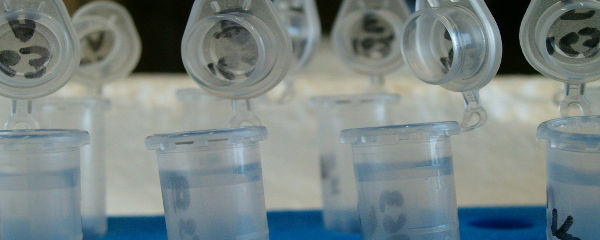What I’ve Learned:
Ketone: We could make beautiful organics together.
For years, I thought a “ketone” was a musical instrument played by new wave ’80s bands and hairsprayed Euros and one slightly unsettling busking bear. Needless to say, I was wrong.
(Well. I say “needless to say”. But if someone had told me, then my final exam answers in organic chemistry class might have involved a lot less Herbie Hancock. So, there’s that.)
Later, I started thinking of ketones as more like Oreo cookies — which, oddly, is sort of right. A ketone is an organic — which is to say, carbon-containing — compound with a particular sort of structure. On one end is… well, anything that includes a carbon atom, pretty much. A methyl. A benzyl. Hansyl. Gretyl. You name it.
On the other end is… pretty much any other carbon-including thing, or possibly even the same kind of thing. So basically, the ends aren’t important. Just like an Oreo cookie. But in a ketone, the sweet, sweet creme filling is a thing called a carbonyl — that’s a carbon and an oxygen atom double-bonded together. Or double stuf’d. If that helps you remember.
Ketones come in a few different classes, just like there are red velvet and creamsicle and watermelon Oreos.
(Actually, there are watermelon Oreos because apparently Nabisco as a corporation has fallen into an existential funk and disavowed the concept of rational meaning in the universe. This is what happens when you mix pastries and philosophy.)
Some ketones have two carbonyl groups; these are called “diketones”. Others are cyclic, meaning their two arm parts branching off the central carbonyl meet each other and form a ring. Sort of like an Oreo doughnut.
(Because apparently, that’s also a thing that exists. What, is Kierkegaard running a Krispy Kreme shop or something? Madness.)
Ketones know some cool tricks, too. For instance, if a ketone contains a carbon right next to the carbonyl group, and that next-door carbon is bonded to a hydrogen atom, then the hydrogen can often swap places and jump up to bind the oxygen of the carbonyl group, while the double bond slides down between the central carbon and it’s neighbor that just lost a hydrogen. It’s the same set of atoms; the hydrogen just hops back and forth like a ballet dancer. Or a hopscotcher. Or a subway-busking keytar bear.
When this hydrogen moves, the new molecule forms a tautomer. I got extremely excited when I learned about this process.
I was later told that “tautomer” is not, in fact, the animal that Han cut open to keep Luke warm in The Empire Strikes Back. And that the molecule formed by a ketone-hopping hydrogen is called an “enol”. Which is fun to say, but not nearly as much as imagining billions of microscopic reptomammals swimming around in a chemistry flask.
Anyway, ketones are pretty much all around us. A lot of sugars, including fructose, are ketones. Many biological processes — like photosynthesis — produce or break down ketones. And certain kinds form “ketone bodies” in the blood, an important diagnostic readout for several health conditions. On top of that, we make industrial ketones to use as organic solvents, pharmaceuticals and as building blocks for synthetic polymers.
So ketones are pretty cool, I suppose. And also important for life and society as we know it. And, since they contain fructose, also Oreos. Take that, keytar bear.



